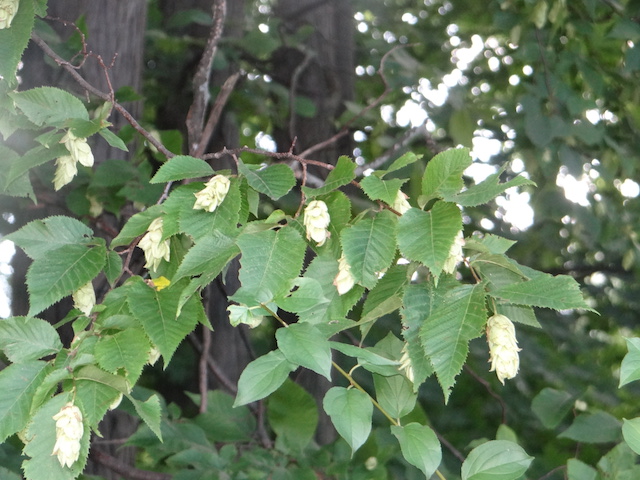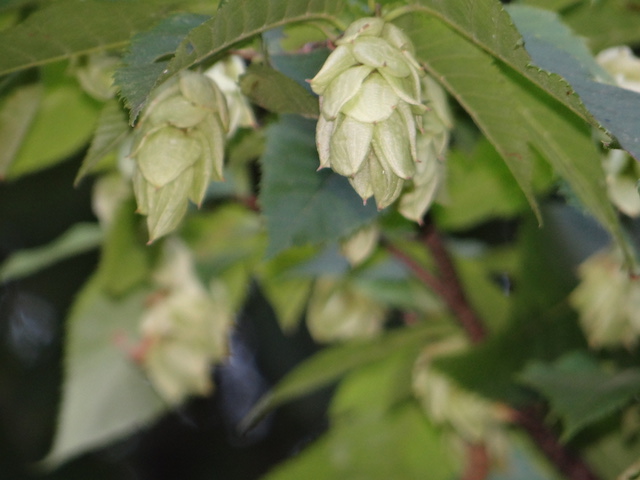While visiting in New York, I came eye to eye with a small understory tree at the edges of a grove of mixed hardwoods. What caught my attention were the “fruits” that looked so similar to the hops that Jan’s husband grows, but this was not a vine. So, of course I took pictures so I could look it up.
 This is the Hop Hornbeam, Ostrya virginiana ( also called Ironwood Hornbeam). The “hop” is papery and encloses a little nutlet which in some areas serves to attract winter feeders like turkeys, deer, squirrels, rabbits and some songbirds. The nutlets drop late and will land on snow and be easily seen. In other locales it may be seldom utilized by same. Like beech trees, the leaves are coppery and will be retained through the winter. This is a fairly small, slender tree but is architecturally interesting due to the twists and turns of the trunk and its lacy branches.The bark has been described as looking like “shredded wheat”. It has few problems with insects or disease issues and is used occasionally as a street tree.
This is the Hop Hornbeam, Ostrya virginiana ( also called Ironwood Hornbeam). The “hop” is papery and encloses a little nutlet which in some areas serves to attract winter feeders like turkeys, deer, squirrels, rabbits and some songbirds. The nutlets drop late and will land on snow and be easily seen. In other locales it may be seldom utilized by same. Like beech trees, the leaves are coppery and will be retained through the winter. This is a fairly small, slender tree but is architecturally interesting due to the twists and turns of the trunk and its lacy branches.The bark has been described as looking like “shredded wheat”. It has few problems with insects or disease issues and is used occasionally as a street tree.
American Indians are said to have used this medicinally for coughs, muscle aches and toothache.
Our settlers, who had up-close opportunity to form opinions of most trees, nicknamed this tree “Ironwood” because it is that tough–some say like working with stone. And it will heat up your saw while trying to cut it. It was used for tool handles and sled runners, things that need durability. It makes an excellent firewood.
To monoculture tree plantation managers, this tree can become a pesty weed tree because it will compete with and suppress the growth of the desired species. It is very shade tolerant so won’t die out in the understory. When the overstory is harvested, the Hop Hornbeam will aggressively reproduce in the sun and injured trees (cut, burned) will vigorously sprout. They will hinder other trees seedlings’ access to nutrients and water, keeping them under-sized for years.
I think I can admire its better virtues without planting one in my yard.



